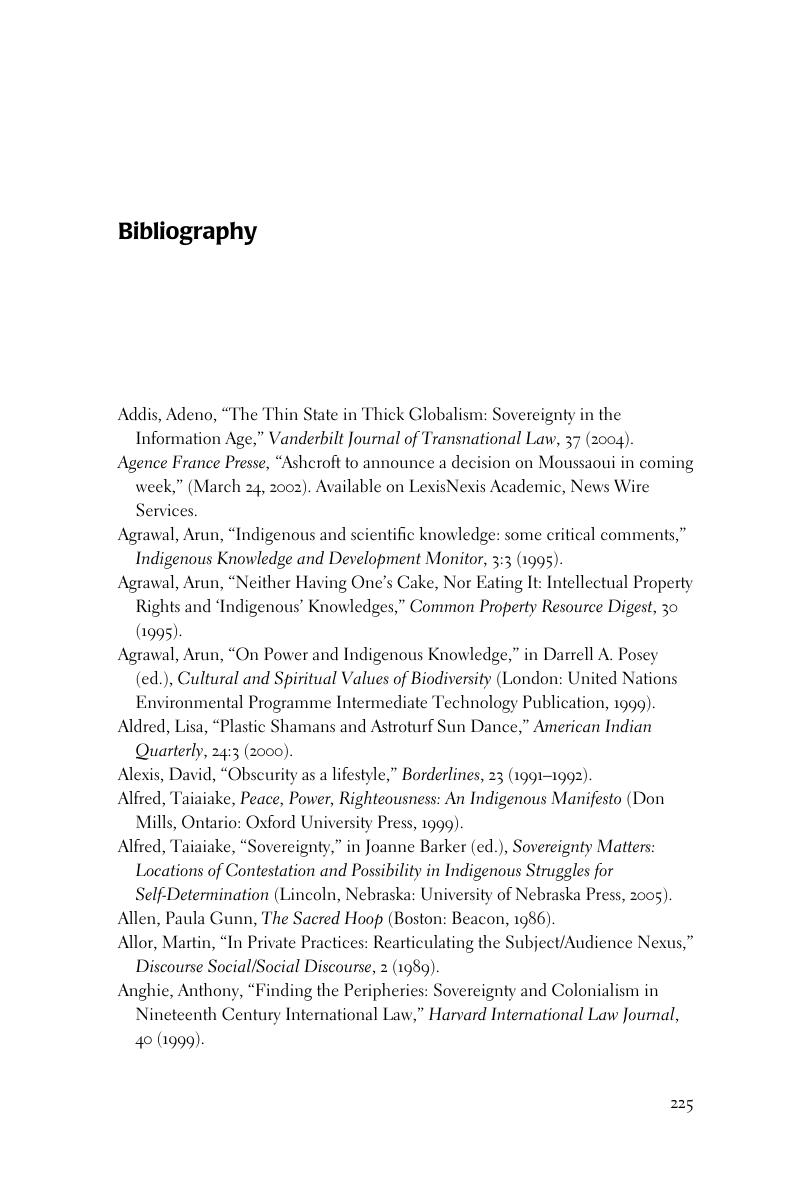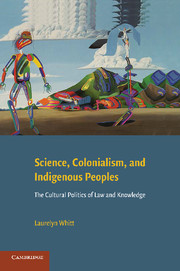Book contents
Bibliography
Published online by Cambridge University Press: 04 August 2010
Summary

- Type
- Chapter
- Information
- Science, Colonialism, and Indigenous PeoplesThe Cultural Politics of Law and Knowledge, pp. 225 - 254Publisher: Cambridge University PressPrint publication year: 2009



